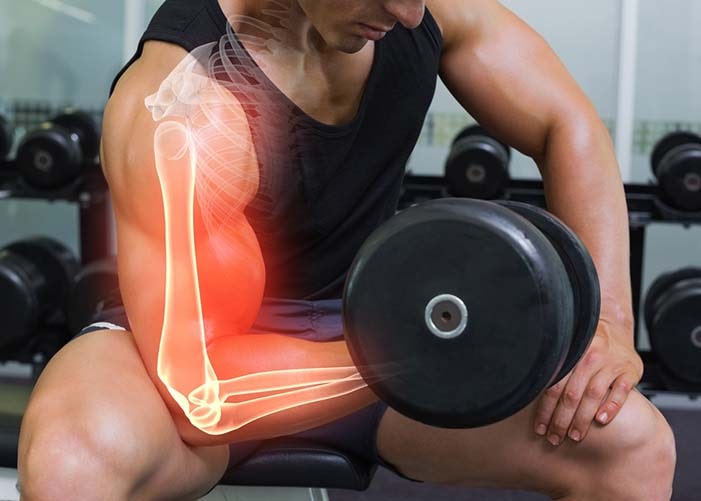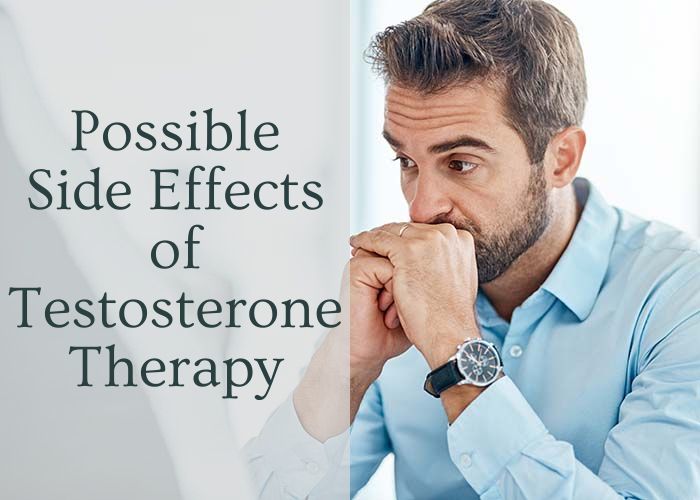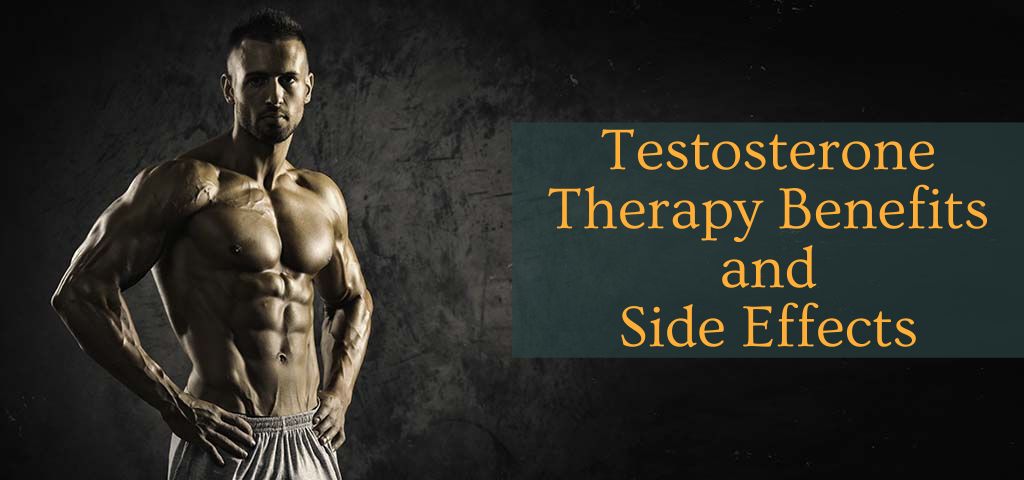What Are the Benefits of Testosterone for Men?
Testosterone is the primary male sex hormone, but that is not its sole purpose. Low testosterone levels interfere with the many functions testosterone plays in the body. Testosterone replacement therapy returns testosterone levels to their ideal state to optimize critical physiological functions and well-being.
Because low testosterone interferes with many functions in the body, increasing T levels can provide numerous benefits. Some of these changes may not be noticeable, such as testosterone’s effects on inflammation, which occur within 3 to 12 weeks of starting treatment.

Improved insulin sensitivity is a benefit that can begin within days of your first testosterone injection. Still, the effects of testosterone on glycemic control may not become evident until 3 to 12 months into the treatment.
As you can see, testosterone goes right to work, improving vital physiological functions in the body. Additional benefits and their timelines are listed below.
Improved sexual wellness
Sexual interest begins to improve within three weeks of starting TRT, making it one of the earliest benefits most people notice. Around the same time, some men may notice an increase in their morning erections.
While sex drive might increase quickly, some men with erectile dysfunction might not see improvements in erections or ejaculations for up to six months. Other males might notice these improvements within 2 to 4 weeks. These changes can happen at any time during this treatment.
It is also important to note that low testosterone is not the only contributing factor to ED. Poor circulation and specific health issues can interfere with erectile functions. If TRT does not help, discuss other possible interferences and treatments with the doctor.
Increased bone density
Testosterone’s effects on bone mineral density are partly mediated by estradiol via testosterone conversion. Studies of up to 36 months show improvements beginning after six months of TRT and continuing to improve the entire time. Testosterone helps reduce bone resorption markers in its role of increasing bone density.

Increased size and strength of muscles
It should come as no surprise that increased muscle mass and strength are benefits of testosterone therapy. Testosterone increases maximal voluntary strength in large upper and lower extremities muscle groups.
At the same time, testosterone exerts its influence on metabolism, helping to burn stored fat – both subcutaneous and visceral. Changes in lean muscle mass, fat mass, and muscle strength may appear as early as 12 to 16 weeks, with stabilization around 6 to 12 months. Improvements may continue for years with ongoing treatment.
Reduced symptoms of depression
Low T has been shown to contribute to depression, with many males who do not respond to traditional antidepressants experiencing significant improvements with TRT.
Detectable benefits may appear as early as 3 to 6 weeks, with a maximum improvement after 18 to 30 weeks.
Improved mental health
Testosterone has androgen receptors throughout the brain, which is why improvements in concentration and cognitive processing are to be expected with TRT. These changes can begin within 3 weeks of starting treatment.
Improvements in processing spatial data of visual content may occur within 2 weeks of treatment. The benefits of testosterone therapy include improvements in verbal and spatial memory. Testosterone has also been shown to reduce amyloid plaque buildup in the brain, helping to reduce the risk of Alzheimer’s disease.
Improved energy levels and overall well-being
Benefits in energy, overall mood, and quality of life may appear as early as 3 weeks, with ongoing improvements continuing with TRT. Decreased fatigue, increased desire for socialization, and reduced anxiety significantly impact daily life.
Improved heart health
Testosterone plays numerous roles in heart health, beginning with stimulating red blood cell production in the bone marrow. TRT effects on erythropoiesis appear around 3 months, with peak improvements between 9 and 12 months.
Another factor for heart health is cholesterol levels, with TRT affecting lipids after 4 weeks of treatment and reaching maximum benefits between 6 and 12 months. Testosterone helps lower LDL, total cholesterol, and serum triglyceride levels.
Many studies have also shown testosterone treatment increases HDL levels, which helps sweep excess LDL cholesterol from the arteries to improve circulation and reduce the risk of atherosclerosis.
Reduction in blood pressure may occur after 3 to 9 months, with maximum effects observed after 12 months. Resting heart rate may decrease between 40 and 44 weeks of treatment. Increased exercise capacity in men with chronic heart failure (CHF) occurs after about 12 weeks of the therapy. Lower heart attack risk has been shown in men who restore normal T levels with TRT.
You can easily achieve these and other TRT benefits with customized treatment programs prescribed by our hormone doctor. Contact our hormone therapy clinic for a free consultation to learn more about what testosterone therapy can do for you.
How to maximize benefits from TRT
Because testosterone levels naturally decline 1 to 2 percent yearly, maintaining ideal T levels is crucial throughout life. The same approach applies to receiving TRT. Maximizing the benefits of your treatment can help you achieve optimum results.
The following actions can help support and maximize the benefits of your testosterone treatment:
- Get enough sleep. Your body needs between 7 and 9 hours of sleep each night to optimize hormone production and usage. Anything less can increase cortisol (stress hormone) production and decrease testosterone.
- Reduce stress. The body increases cortisol production in response to stress and, as we mentioned, lack of sleep. Cortisol opposes not only testosterone but also human growth hormone (HGH) secretion. Since testosterone and HGH are mutually beneficial to one another, both hormone levels will further decline as cortisol increases.
- Exercise more. Weight training and aerobic exercise each play a role in helping reduce body fat and increase muscle mass. Excess body fat converts free testosterone into estradiol (estrogen) via the enzyme aromatase produced by the fat cells. Estrogen tells the body to store fat, causing a further decline in T levels.
Whole-body strength training with more weight and fewer reps has a beneficial influence on testosterone levels
- Avoid excessive alcohol consumption. Unhealthy habits are just that – bad for the health. Excessive alcohol consumption can adversely affect the Leydig cells in the testes that produce testosterone, lowering T levels and interfering with spermatogenesis and fertility.
- Diet and weight. Food plays a significant role in testosterone production. Healthy fats, high-quality protein, colorful fruits and vegetables, nuts, and seeds can all help improve testosterone levels. Avoiding fried foods and junk food helps not only your hormones but also your weight. As we already mentioned, carrying around excess fat reduces testosterone levels.
Most Common Side Effects of TRT
Although testosterone replacement therapy has many benefits, it is not free from side effects, which are usually due to abuse or misuse of the medication. The most common cause of side effects from TRT is higher than normal testosterone levels.
High testosterone can be as detrimental to one’s health as low testosterone. That is why getting testosterone treatment from a qualified and experienced hormone specialist is crucial to avoid adverse changes in hormone levels.
A hormone doctor uses comprehensive blood analysis and scientific calculations to determine the appropriate testosterone dosage for each person. Administering more than the legally prescribed amount can lead to elevated testosterone levels and adverse reactions. Following the doctor’s prescription is the only way to get safe results.

Another factor that can lead to unwanted side effects occurs when testosterone medications are purchased illegally online or from another individual. Testosterone, used illegally, becomes an anabolic steroid. It can have damaging consequences for the body, including heart health. Additionally, steroid abuse is illegal and can result in prosecution.
The most common side effects associated with TRT include:
- Injection site irritation
- Skin reactions or rashes if using gels or patches
- Fluid retention
- Increased urination
- Decreased testicular size
More severe side effects that can occur with elevated testosterone levels include:
Worsening of sleep apnea
TRT may cause sleep apnea in some men. Sleep apnea patients should discuss this with the hormone doctor before beginning TRT, as it may worsen their symptoms. Because sleep apnea often improves with weight loss, the benefits of testosterone therapy on body composition could help resolve these issues in the long run.
Acne and oily skin
It may seem you are back in puberty, dealing with oily skin and acne during TRT. Testosterone is an androgen hormone, and since the skin glands contain androgen receptors, testosterone can stimulate the production of increased sebum which can block the pores. Maintaining clean skin can help decrease oily skin and acne.
Gynecomastia
Breast enlargement or tenderness occurs when too much free testosterone converts into estradiol. The doctor will monitor your treatment and may include an estrogen blocker to prevent that conversion.
Infertility
Supplemental testosterone bypasses the testes as it circulates only in the bloodstream. Therefore, TRT has no impact on spermatogenesis. If testosterone levels get too high, the body may decrease the natural production of follicle-stimulating hormone and testosterone, reducing the ability of the testes to produce sperm. Hormone doctors may offer other treatments for men looking to conceive a child with their partner, along with testosterone-boosting therapy.
Polycythemia
Testosterone has a positive effect on improving red blood cell count in men with anemia. However, because of its influence on erythropoietin production, too much testosterone could lead to polycythemia, which occurs when the hemoglobin count becomes too high. Polycythemia can be dangerous if untreated. Regular monitoring of a CBC (complete blood count) is a requirement when receiving TRT to reduce this risk.
Legally prescribed testosterone with ongoing monitoring by the hormone doctor is the best way to reduce the risk of side effects.
Do all forms of TRT have the same effects?
Testosterone comes in many forms, although not all are the same. One type of treatment, oral testosterone, is not recommended because of potential liver toxicity and malignant and benign neoplasm development.
Transdermal testosterone comes in various options, including scrotal and non-scrotal patches, gels, and creams. We do not recommend low-dosage testosterone cream for men, as that is a treatment geared more towards women with low testosterone levels.
The primary concerns with transdermal testosterone are the following:
- Increased risk of cross-contamination with others who come into contact with the treated skin or patch
- Uncertainty of how well the body will absorb the testosterone through the skin
- Significantly higher cost than injections
- Possible skin irritation or rash
Intramuscular testosterone injections are the most recommended treatment by our doctors as they are safe, effective, and highly affordable. There is no risk of cross-contamination from skin-to-skin contact as with transdermal options.
Conventional testosterone cypionate or enanthate treatments at injection intervals every two weeks may produce some highs and lows, which we have found to be a non-issue by using lower dosages administered once weekly. Our doctors are also able to customize testosterone injections for the best results.
Adhesive buccal testosterone tablets that attach to the upper gum are reapplied every 12 hours. They can leave a bitter taste in the mouth, and accidental swallowing can lead to liver toxicity. We do not recommend this form of TRT.
Subdermal implants, or pellets, are inserted under the skin and offer long-lasting benefits for 4 to 7 months. Risks involved include infection at the implant site, bad reactions necessitating difficult removal, and extrusion of the pellets on their own, which can limit and reduce the results.
How to take testosterone safely and effectively
Testosterone therapy prescribed by a doctor to treat low T levels is a safe, legal form of hormone replacement. The hormone specialist will check your blood levels before prescribing treatment and then at regular intervals to monitor your progress.
That way, you avoid the risk of adverse effects.
By following the administration guidelines for your treatment, using only the dosage of testosterone prescribed by the doctor, you should receive significant benefits without any unwanted side effects.
Do not alter the dosage or treatment frequency without approval from the doctor, and report any unusual reactions at once. These steps can help you achieve the results you desire in the best way possible.


